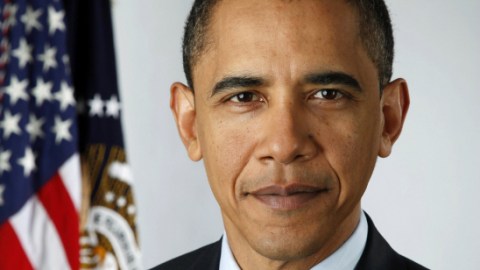Next! Obamacare is toast. Good riddance. Here’s a way better way to go.

What’s the Big Idea?
A door to solving several public-policy challenges opens if health insurance is separated from employment. It’s an approach with features attractive to both major parties- and every American.
In the realm of health care reform, the term “decoupling” refers to separating health insurance from employment. It’s an idea that gets almost no attention in DC, and not much outside. Pity. It’s the lynch-pin of a scheme solving an impressive array of public-policy challenges, including the biggest of them all.
Start by declaring that health care insurance benefits are not deductible for employers and are taxable income for employees, end health insurance for federal employees, and impose a 50 percent tax on employer-provided health care benefits. This makes employer-provided health insurance a lot less attractive for both employers and employees. It would also generate billions in tax revenues, except that the goal is to eliminate that revenue stream by getting employers to stop offering health insurance as a benefit.
Instead, everyone could get health insurance in state-run exchanges. ObamaCare requires the creation of such exchanges. But the exchanges are only a source of insurance for small businesses and individuals who don’t already get insurance through their employment. Under “decoupling,” everyone could get insurance in these exchanges, and nearly everyone would once employers stop offering it.
Make it attractive by prohibiting insurance companies selling insurance in the exchanges from rejecting claims for health care authorized by a physician (with an appeal procedure through which the exchange can cancel payments to doctors for procedures judged inappropriate or unnecessary), defining a “basic” insurance plan, prohibiting rate hikes any more frequently than annually, prohibiting rate-setting based on age (except for children and mothers-to-be), retaining the prohibition in Obama Care on refusing to sell policies – or setting rates – based on pre-existing conditions, prohibiting cancellation of policies for any reason, and requiring that insurance companies announce their rate hikes for the upcoming calendar year by Sept. 1 of every year, and giving everyone 30 days to decide which plan to buy.
Next, add in two features critical to containing health care costs by putting individuals in charge of a significant portion of their first health care bills every year. One: require that all insurance plans be high-deductible plans (deductibles of no less than $1,200, and as much as $2,400 or $3,600). The other: prohibit plans from covering any more than 80 percent of the first $5,000 in health care expenses a year.
Next, impose a payroll tax on public and private sector employers sufficient to generate 50 percent of the cost of the premiums for the basic insurance plans purchased by individuals in the exchanges. Have the states certify every Oct. 1 the cost of the premiums purchased in their exchanges, and have a federal agency declare the tax required to cover 50 percent of those premiums by Nov. 1, so that employers then know what the payroll tax would be for the next calendar year. The federal government would collect the tax just as it currently does with the Medicare/Medicaid payroll taxes, and then disburse the revenues to the states, which would disburse them to insurance companies.
Next, require employers to make payroll deductions at the request of their employees to cover the other half of the cost of the premiums, plus the minimum $100, $200 or $300 a month to cover the deductible.
Next, require those who’ve purchase insurance in the exchanges to create interest-earning health savings accounts (HSAs) into which they would deposit funds to cover the cost of the deductible they select. In the event they don’t spend these funds on health care because they haven’t had to see a doctor, allow them to withdraw these funds the next year, tax-free, for any purpose, or retain the sum in the account and thereby not have to make any more deposits into the account – ever, unless and until they need to see a doctor, or continue to add to the account every year up to the deductible and thereby create a tax-free savings or retirement account.
Next, give the poorest 20 percent of those purchasing insurance in the exchange (determined on the basis of a three-year rolling average of their income, with exclusions for assets to make sure that those with substantial assets don’t quality) subsidies sufficient to cover the half of the premium not covered by the revenues from the payroll tax on employers, and their deductible. In other words, they get health insurance for free. The people in this quintile will be overwhelming be those with incomes below the poverty line and seniors with no assets and no income other than social security. Pay for these subsidies by imposing a 50 percent tax on the premiums of the basic insurance plans purchased by those in the top quintile.
Next, give those in the second lowest quintile subsidies to cover half of the cost of the premiums not covered by the subsidy from the employer payroll tax, meaning that they only to pay only 25 percent of the cost of their premiums, and half of their deductible. Pay for this subsidy by imposing a 25 percent tax on the premiums of the basic or minimum plans purchased by those in the fourth-highest quintile.
Next, give state and local governments “opt-in” rights to the exchanges: in return for paying the same health insurance payroll tax imposed on private-sector employers, their employees could purchase insurance in the exchanges.
Next, impose a 1 percent tax on insurance purchased in the exchanges to generate the revenues to administer them, and a 2 percent tax to collect funds to cover instances in which individuals fail to pay their insurance premiums. Then allow the IRS to divert any tax refunds to cover instances in which unemployed people who’ve purchased insurance in the exchanges fail to make premium payments. And give the exchanges the power to levy assessments to cover past-due premium payments when previously unemployed people come back into the workforce and are once again able to make premium payments.
Finally, retract the fines ObamaCare imposes on employers who don’t offer health insurance, scrap the subsidies ObamaCare offers for those purchasing health insurance, end the health insurance mandates in ObamaCare, end Medicaid and its payroll tax, phase-out Medicare and its payroll tax by not letting in any new enrollees, and impose a 50 percent tax on health insurance purchased by individuals outside the exchanges. Allocate to the states the tax revenues collected by the federal government with the tax on insurance premiums purchased by those few who continue to get insurance outside the exchanges.
What’s the Significance?
Here is how separating insurance from employment would impact the following stakeholders.
The federal government: No more Medicaid/Medicare insolvency (once Medicare is phased out), vastly reduced administrative costs, and a much easier path to a balanced budget that doesn’t require draconian cuts in popular or important programs or gargantuan tax hikes.
State governments: No more budget-busting Medicaid budget line-items (states currently cover 20 percent of the cost, which amounts to about 22 percent of all state government spending), and much easier paths to balanced budgets. All they have to do is cover the deductibles for those in the bottom quintile who purchase insurance in the exchanges, and half of the deductible for those in the second quintile.
Public-sector employers that “opt-in” to the exchanges: No more budget-busting expenses for health benefits for employees, and less resistance to bargaining rights for public employees because they can’t bargain for health-care benefits.
Public sector employees: Less resistance to collective bargaining because they can’t bargain over health insurance.
Insurance companies: A vastly expanded customer base with the addition of people who currently get their insurance through Medicare/Medicaid, the millions who are currently employed but uninsured because their employers don’t offer insurance, and the millions among the un- or under-employed who come into the exchanges to purchase insurance at a 50 percent discount. Plus, guaranteed premium payment for any customer who purchases insurance through the exchanges.
Health care providers: Millions of new customers because nearly everyone – even the unemployed – will have insurance and will therefore be more likely to see a doctor when they need to. Plus, sharply higher demand for wellness/prevention services because everyone will have a financial incentive to do everything they can to stay healthy so they don’t need to see a doctor and can then use their HSA contributions for other expenses. Plus no more Medicaid/Medicare paperwork. Providers will simply collect the sums due from the patient after verifying coverage and deductibles, and submit the bill for the balance to the applicable insurance company. Plus no more being paid only what Medicaid/Medicare pay, rates subject to the whims of congressional politics and the demands of budget balancing.
Insurance premiums: Eventually these will reflect the cost of caring for everyone, including seniors. But as the costs of caring for seniors gets absorbed by everyone purchasing insurance in the exchanges, there is new downward pressure on premiums imposed by individuals, who have to cover the first $1,200 (or $2,400 or $3,600) of their own health care every year plus 20 percent of their health care bills below $5,000 a year, and who are therefore far more cost conscious than they are now, when for many of them virtually all of their health care costs are covered by employer-provided insurance. Plus, the burden of providing health care for seniors is spread to nearly everyone, because nearly everyone will be buying insurance in the exchanges. It will be the biggest possible risk-sharing pool, short of individual mandates.
Employers: No more expenses for human resources personnel to acquire and administer health care insurance benefit plans. No more Medicaid/Medicare payroll taxes (once Medicare is phased out). And a level playfield (no more competing against companies that don’t offer their employees health insurance, nor using payroll-busting health benefits to compete for valued and sought-after employees against those companies that do). Those companies that currently cover more than 50 percent of the premiums of their employees will realize a windfall that can be used to expand markets, offer other employee benefits (more vacations, child care benefits, etc), boost salaries or add employees. Companies that don’t currently offer health insurance as a benefit would be required to budget for the payroll tax covering half of the cost of health insurance premiums purchased through the exchanges, but ObamaCare requires those with 50 or more employees to do so soon anyway, and any business owner would much rather pay a payroll tax than have to go through the headache of purchasing and then administering an insurance plan.
Individuals: In return for about two hours every year to sort through health insurance options and choose a plan (much as they currently do for auto insurance), everyone purchasing insurance in the exchanges gets health insurance for at least half the cost, and those in the bottom two quintiles get insurance for free or at 75 percent off. Plus, no more having to pay higher health care bills (and insurance premiums) because health care providers have to charge private-pay patients higher rates to make up for the lower rates they get for providing care for Medicaid/Medicare patients. Plus, everyone gets something money can’t buy: the freedom to select or change employment without losing health insurance, meaning that millions will no longer be working jobs they don’t want. Plus, they’ll be getting insurance in regulated marketplaces that protect them from capricious insurance companies that sometimes currently deny coverage of expensive health care treatments. And they can purchase insurance for life that includes whatever end-of-life care they or their health-care designee wants.Plus, veteran employees no longer have to be concerned about being pushed aside or laid-off by employers seeking to reduce health care costs by favoring younger, healthier employees.And assuming they haven’t purchased multi-year plans, anyone can switch plans any year they want to, without having to be saddled with premiums based on their age or pre-existing conditions. And everyone gets access to insurance that can cover every dime of their health care costs above $5,000 annually (and up to 80 percent of their costs below $5,000 annually after they’ve met their deductible), which is when insurance is needed to avoid ruining the financial lives of those faced with serious and expensive health challenges.Those who are employed don’t have to write a check for their health insurance premium, because their premium is paid by a payroll deduction. And most of those who are unemployed won’t have to pay a dime, either, because they will be among the 20 percent with the lowest income purchasing in the exchanges.Those in the top two quintiles get taxed to pay for the insurance purchased by two in the bottom two quintiles, but the tax applies only to the basic plans. Anyone can purchase as much additional insurance (“Cadillac” plans) as they want, tax free. And with the 50 percent tax on health insurance premiums purchased by individuals outside the exchanges, even the wealthy will purchase insurance in the exchanges. Oh, one more benefit for everyone: a lot more jobs, as businesses are freed from the burden of acquiring and administering health insurance plans, and having to either cover annual increases in health insurance premiums or hitting up employees for a greater percentage of the premium costs, and individuals find the path to launching their own business is easier. Currently they face the daunting prospect of having to pay for their own health insurance if they leave a job to start a company. Under this plan, half of their insurance is paid for if they purchase it in an exchange. And the option of hanging on to a job just to keep the health insurance isn’t there anymore, so the incentive to start a company is greater. There will be a lot more entrepreneurs, and they’ll fuel job growth in the small business sector of the economy, which is where economists say job growth is needed because large companies increasingly use foreign workers. There are a lot of ideas out there for ways the government could create jobs and spur job growth. Most all of them add to the deficit. The cost to federal taxpayers of this plan? Zero.
Democrats: They get the nearly universal health insurance coverage they seek without the individual mandate that must survive a dicey constitutional challenge (praying they win Justice Kennedy’s vote) and, more importantly, must overcome a lot of resistance among individuals because Americans as a rule don’t like being told they have to do something. Plus, they get credit for the exchanges that ObamaCare created. Plus, they can get a program providing health care for the poor using a progressive tax structure.
Republicans: They get a private-sector health care insurance market that controls costs with competition (both between insurance companies and between heath care providers), and nearly universal use of the HSAs some among them have championed for years. Free health insurance is still an entitlement for the poor, but only for the 20 percent of the poorest purchasing health insurance in the exchanges, a far more politically viable approach than having to defend a voucher system in which the poor and seniors are left to fend for themselves if the vouchers doesn’t cover their health care needs, as they would with Rep. Paul Ryan’s plan. More importantly, the market-distorting power of the exchanges is minimal: the incentive to be among the 20 percent of the poorest purchasing health insurance in the exchanges in order to get free health care insurance isn’t as great as the incentive to get a job, earn an income and get out of the bottom quintile. Yes, those who do would have to start paying for their health insurance, but never more than half of its cost. And as attractive as free health insurance is, it doesn’t put food on the table or a roof overheard. Only jobs can do that. So no one is going to try to get into the bottom quintile, or be willing to stay there.
Society: America gets a grand bargain between employers and employees on health insurance premiums, each covering precisely half. It also gets a powerful tool to control health care costs because everyone will pay for at least the first $1,200 in health care costs annually, plus at least 20 percent of the next $5,000, which makes everyone keen on saving what they can when they visit a doctor, and will be a boon for efficient, low-cost health care providers, as well as providers of wellness and prevention programs. America also gets a healthier population, because millions will be trying to avoid health care costs to be able to spend their pre-paid deductibles on something other than health care, which means everyone will have a powerful new incentive to watch what they eat, exercise more and become champions of cleaner, healthier environments. And it gets a business community no longer saddled with having to provide health insurance, and therefore better able to focus on generating quality products and providing professional services, and hiring the employees that requires. And it gets a renewed spirit of entrepreneurship, with thousands of new businesses fueling job growth. And it gets a more socially-cohesive community in which nearly everyone is in the same insurance pool and therefore nearly everyone gets dinged when someone needs to see a doctor, and everyone benefits financially when the population gets – and stays –healthier.
Ryan Ross is a former investigative reporter turned private investigator in Denver. He can be reached at [email protected].





